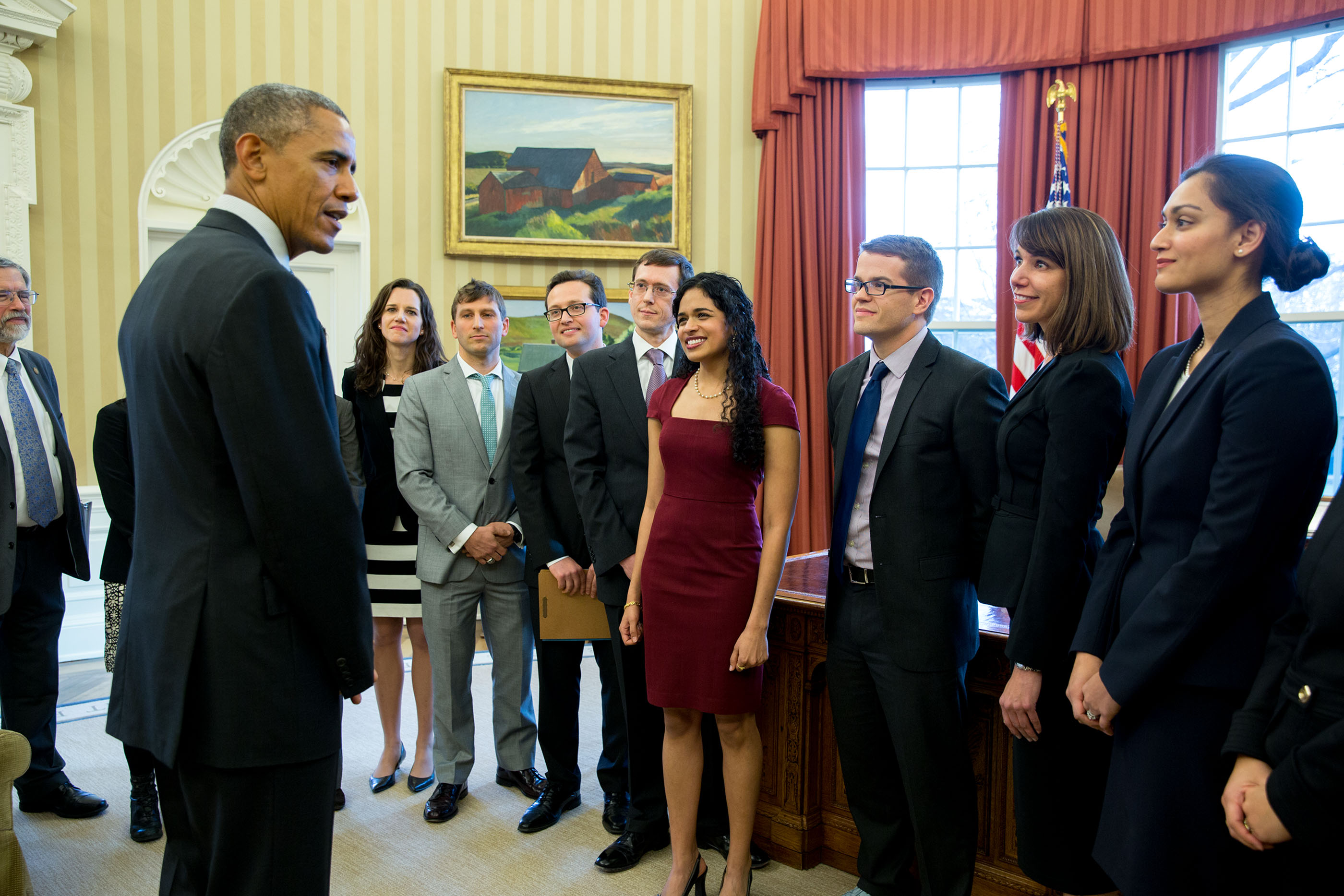

Research insights from behavioral science focus on how people make decisions, and contain important lessons for how to design Federal programs to make them easier for the American people to engage with. For example, commonsense steps — such as simplifying communications and making choices more clear and user-friendly — can have a meaningful impact on who participates in a Federal program, whether that program is focused on applying for financial aid for college, saving for retirement, or something else.
Take the example of applying to college. Just yesterday, as part of his visit to Des Moines, Iowa, President Obama highlighted new steps the Administration is taking to help more low-income families gain earlier, easier access to Federal financial aid, including giving students filling out the FAFSA the ability to electronically retrieve tax information filed for an earlier year, rather than waiting until tax season to complete their applications. Steps like these will make the process of applying to college simpler and easier, helping thousands of students. Many other Federal programs could benefit from similar updates to make those programs more user-friendly.
That’s why today, the President is signing an Executive Order that directs all Federal agencies to use insights from the behavioral sciences to make government programs easier to access, more user-friendly, and more effective. As part of the Executive Order, agencies are directed to look for opportunities to streamline access to programs, improve the way they communicate and present critical information, and deepen their relationships with the behavioral science community. To support the new Executive Order, the Administration is issuing guidance on how agencies can use behavioral science insights to make Federal forms simpler and easier for Americans to complete.
In addition, the Administration is making permanent the first-ever Social and Behavioral Science Team (SBST), a cross-agency group of experts from human-centered design, behavioral economics, and related fields, which will provide advice and guidance to help agencies implement the Executive Order.
A recently released report features the Social and Behavioral Sciences Team’s first year of projects, which have made government programs easier to access and more user-friendly, and have boosted program efficiency and integrity. As a result of these projects, more Servicemembers are saving for retirement, more students are going to college, more Veterans are accessing their benefits, more farmers are obtaining credit, and more families are gaining healthcare coverage.
Here are just a few examples of how these insights have led to real benefits:
- Sending service members a single email that highlighted the three steps needed to enroll for the Thrift Savings Plan (a workplace savings plan for Federal employees), and that conveyed the potential value of making even small contributions to the plan, nearly doubled the rate at which service members signed up for the plan.
- Sending eight text messages to college-accepted high-school graduates, which reminded them to complete required pre-matriculation tasks, led to a nearly 9 percent increase in college enrollment among low-income students.
- Highlighting to Veterans that they had earned an education and career-counseling benefit, relative to just notifying them of their eligibility, led to a nearly 9 percent in Veterans accessing the application for this benefit.
- Sending personalized letters to farmers that included a tailored set of action steps to apply for a loan as well as contact information for the recipient’s local loan offer increased the number of farmers who obtained a loan by 22 percent.
Building on the past year of successes, the SBST is launching 20 new projects in the upcoming year, focused on everything from helping children retain access to nutritionally-balanced, low-cost or free lunches, to providing unemployed workers with enhanced job-search support. You can read about these new projects here.
This is just the start.
We in the Administration are eager to hear ideas from the public and the academic community of additional ways in which behavioral sciences can help in improving Federal programs. To stay updated on the work of the SBST and offer ideas for new projects that incorporate behavioral science insights, visit the new online resource page at www.sbst.gov.


